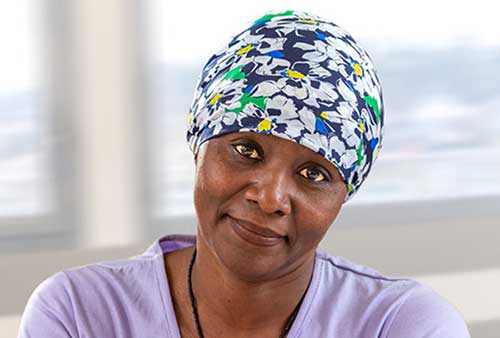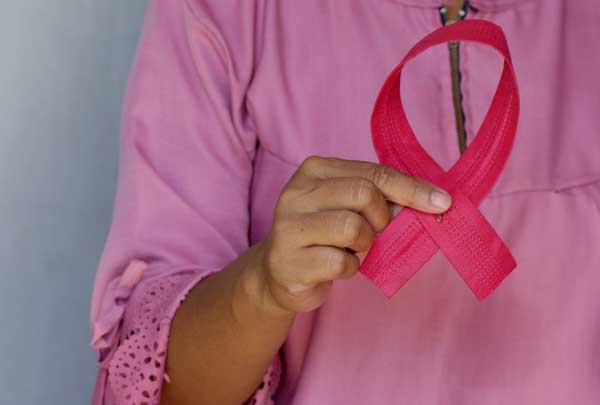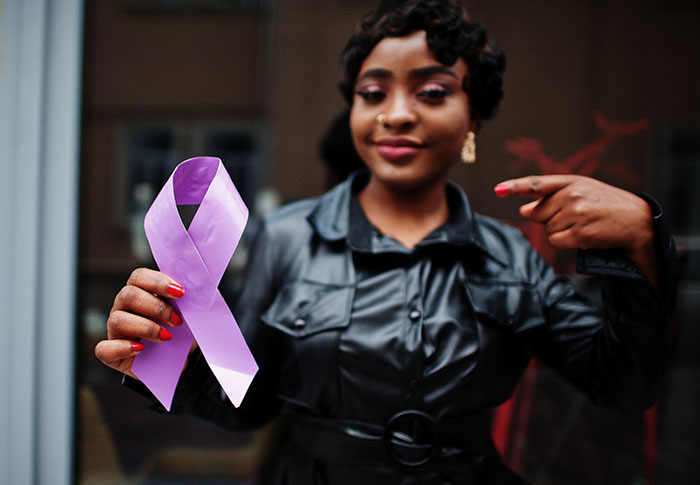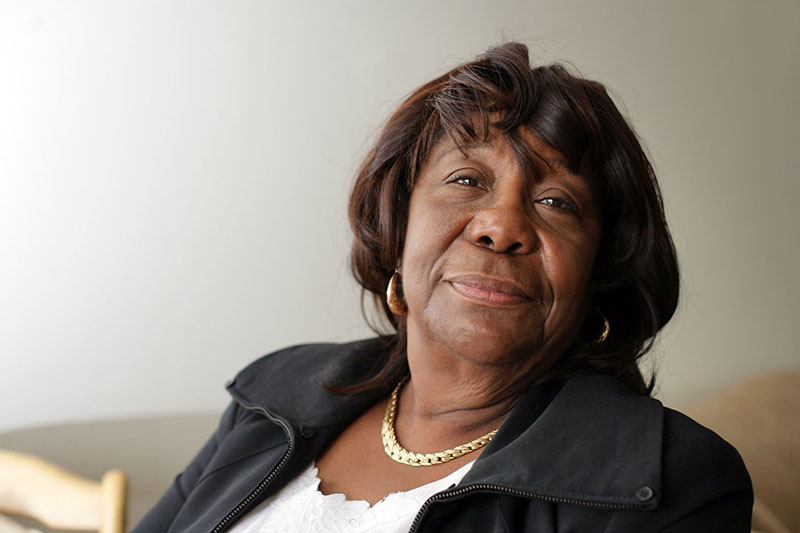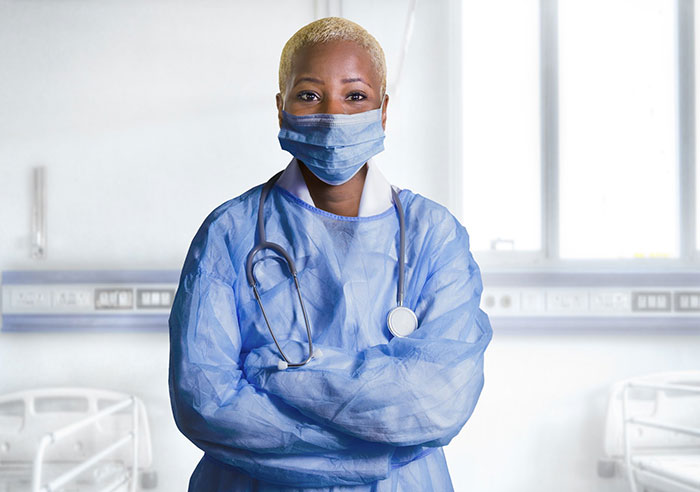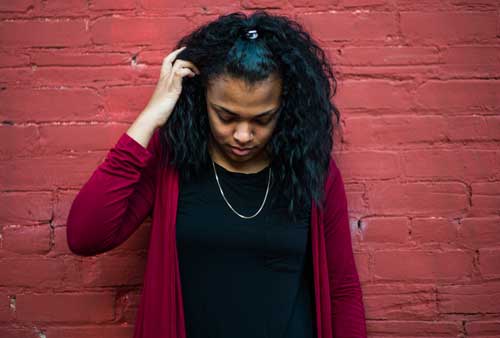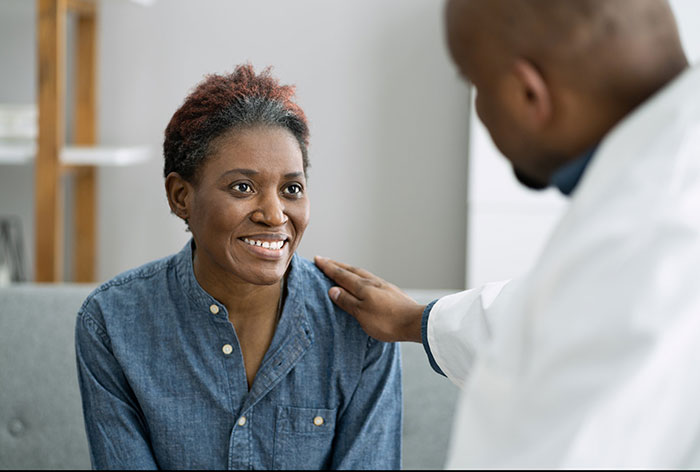You become a cancer survivor the moment you are diagnosed with breast cancer. You will experience anger, confusion, fear, frustration, a loss of control, pain, a sense of isolation and extreme life changes. As you progress through treatment, you can find strength to fight this disease. You will find courage and hope as you learn to live with cancer and live after cancer through your lifetime.
Read more by clicking the down arrows below.
Surgery
After you have been diagnosed with breast cancer, your doctor will develop a treatment plan for you. You will have a variety of medical team members such as clinic nurses, cancer care coordinator, surgeon, radiologists, chemotherapy team, plastic surgeon, and others as needed. Always make sure you understand the treatment plan and the expected outcomes. An evaluation of your medical concerns, personal preferences and treatment recommendations will be discussed with you.
Options may include breast surgery as local treatments such as:
- Lumpectomy
- Simple or Total Mastectomy
- Modified Radical Mastectomy
- Radical Mastectomy
- Sentinel lymph node biopsy
- Axillary lymph node dissection
- Breast reconstruction
Follow-up Treatment
Adjuvant, systemic treatments may be given before and/or after surgical treatments have been performed to help kill any cancers that may still be in the body after surgery. Systemic therapy also keeps cancer cells from growing, recurring and spreading to other parts of the body. Depending on the size of the tumor, pathology and stage of the cancer.
Follow-up therapies may be given before and/or after surgical treatment:
- Chemotherapy
- Hormonal therapy
- Radiation therapy
- Targeted therapy
Keep the surgical site clean and dry as possible.
Surgery: What to Expect
It helps to prepare yourself emotionally and physically for breast cancer surgery and the loss of a portion or your whole breast(s). Recovery from reconstructive breast surgery is similar. Make sure you understand the surgery and the aftercare required. Review the information your plastic surgeon has given you about your type of breast surgery.
Breast surgery generally can be a 1-day outpatient or extended stay inpatient for Lumpectomy or several days in-patient for Mastectomy depending on your general health condition.
Some hospitals give patients a special garment called a “Softee” or a temporary prosthesis for full and partial mastectomy patients to wear home. You can undergo an assessment later for a custom fitted prosthesis, which is covered by most insurance providers with authorization from your physician.
You will have pain and limited movement after surgery in the breast and chest area, under your arms and even in your back. Be careful and give yourself time to heal.
Wear loose and comfortable clothing that does not restrict movement.
Keep the surgical site clean and dry as possible.
Inform your doctor if you experience surgical bleeding, blood clots, fluid buildup, infections, pain, swelling, or other problems in or around the surgical site(s), arms or chest areas.
You may have drainage tubes that will be removed in about 2 weeks after surgery. Drainage tube removal can be uncomfortable.
After the bandages are removed, look at yourself in the mirror when you are ready. This may be an emotional experience and it may be helpful to rely on someone from your support network to discuss your feelings.
Everyone’s cancer experience is different. Their type of cancer is unique. Treatments and surgeries will look different depending on the location and size of the tumor(s) and size of the breasts. The length of time it takes to recover and heal is determined by type of breast cancer and treatments.
Your plastic surgeon will advise you about showering, bathing, and wound care. Most women return to normal activities within 6 to 8 weeks after surgery. It may be several weeks before you can do strenuous exercise.
Do not drive, carry or lift heavy objects, and no cleaning, mopping, or vacuuming with your surgical arm(s) until your doctor approves it about six weeks after surgery. Doing heavy and repetitive activities can cause arm swelling, fluid retention in the arms, lymph edema, nerve pain and wound infection. Ask someone for help with household chores and shopping.
Surgical scars and numbness will take years to heal and fade. Using a gentle lubricant cream or shea butter daily on the scars will help them heal and break down the connective tissue alleviating tightness.
Wait until you heal from surgery to be fitted for a post mastectomy bra and prosthesis for the best fit and a more comfortable experience.
Discuss other types of breast surgeries with your doctors such as reconstructive surgery for nipples, tattoos for areolas or surgical scars.
Breast cancer surgery changes your appearance, and it can have psychological effects on you and others as well.
Ask for help in adjusting to the new you.
Sources: American Cancer Society, www.cancer.org, and Breast Cancer Doctor.
After breast cancer surgery your arm(s), back and neck may have reduced mobility. Your healthcare provider can provide you with information on exercises to restore your range of motion, reduce swelling and prevent a condition known as “frozen shoulder.”
Check with your healthcare provider about when to begin post-surgery exercise.
The recommended exercises may start with gentle and slow stretching, shoulder rotations, daily finger wall climbing and then progress to beginning Pilates or Yoga as your comfort increases.
Continue with gentle exercises and stretching to rebuild your range of motion and strength in your arm(s).
Click on the links below for more exercises and information.
https://www.mskcc.org/cancer-care/patient-education/exercises-after-breast-surgery
As you heal we recommend a self-care plan so you get some relief from the side effects of chemotherapy, hormone therapy, radiation therapy and surgery in your journey of survivorship.
Also be aware there are small risks of developing blood clots, stroke, other cancers, weakness to the heart from chemotherapy and radiation.
Chemotherapy kills cancer cells and good cells from head to toe which can lessen your body’s ability to fight off infections.
To be safe, it is best to:
- Do dental work BEFORE surgeries, chemotherapy or other treatments to avoid bleeding and infections. Ask your dentist about special dental cleansers and saliva substitutes. No hard brushing or flossing of the gums and teeth; be gentle.
- Ask family members or friends to help you with child care, grocery shopping, housework, preparing meals, transportation, pet care, pick up prescriptions and accompanying you on medical appointments. Avoid heavy housework or lifting using arms after surgery.
- Be careful when cooking, cutting, and sewing; avoid burns, cuts, needle pricks to your hands.
- Wear rubber gloves when washing dishes, using cleaning products, or working in the garden.
- Wear a hat, long sleeves, and use sunscreen during hot sunny days to avoid sunburn.
- Be careful with animals; or when outside avoid insect bites, animal bites or scratches.
- Check your mouth and skin every day for developing mouth sores. Sugar-free gum or hard candies may help prevent dry mouth. Avoid crunchy, hot, or spicy foods if mouth blisters or sores develop.
- Eat more fruits, vegetables and soft foods you can tolerate.
- Ask for medication for pain.
- Drink lots of water to stay hydrated and flush your system. Chemotherapy drugs can build up in your body and harm your kidneys.
- Rest as much as possible, surgery and treatments take lots of energy.
- Tell your doctor about other health issues you have such as eczema, diabetes and high blood pressure that may complicate or counteract with your medicines and treatment.
- Frequently wash your hands with a mild, non-fragrant, antiseptic soap and rinse thoroughly. Use moisturizing lotions such as pure Aloe Vera or Shea Butter.
- Gentle massage and lymph edema treatments may help with fluid buildup in arms, hands, surgery areas and torso.
- Avoid large crowds and people with colds, infections or conditions that may affect your immune system.
- Avoid alcoholic drinks or non-prescribed drugs which can impact the effectiveness of chemotherapy to fight the cancer or delay your healing and recovery.
- Avoid blood draws or pressure checks or injections on the surgery side for five years which can affect your lymph nodes and cause infection.
- Do not wear tight clothing or jewelry on your surgical arm(s).
- Use a cream hair remover or electric razor to remove underarm or body hair as the surgery areas heal.
- Avoid hair weaves, hair perms or gluing hair tracks to the scalp.
- Find salon professionals in your home area that have been trained in cancer hair and scalp care, oncology massage, and nail and skin care.
- Avoid manicures or pedicures; nail polish is OK, but do not cut the cuticles which can lead to infection.
- Seek emotional care, spiritual healing and mental health therapy to deal with your feelings.
- Enjoy time with family and friends as you attend family gatherings and events.
- Take time to do what is best for you, get the help you need and understand each step along the way.
- Celebrate every healing milestone. Live life to the fullest.
Common Side Effects of Treatments
You may have some or many of these side effects which are the norm, but always bring them to the attention of your healthcare provider. Sometimes the side effects can be the most annoying in the cancer experiences and show up later. Keeping a record of side effects as they occur may be helpful when you discuss them during follow up appointments.
- Allergic reactions to medicines
- Appetite Loss
- Breathing difficulties
- Change in sense of smell and taste
- Constipation
- Decreased Sexual Interest
- Depression, Mood Swings
- Diarrhea
- Darkening of complexion, gums, hands, feet, nails, tongue
- Dizziness
- Dryness of skin, vaginal dryness
- Fatigue
- Hair Loss (facial, head only, all over body)
- Hot Flashes
- Infections
- Loss of menstrual period
- Loss of fingernails or toenails
- Menopause
- Mouth sores
- Nausea
- Numbness in breast, feet, fingers, toes, or underarm (neuropathy).
- Pain from surgery or other treatments
- Radiation site burn, skin hardening
- Reduced red and white blood cells and platelet count
- Skin blisters or burns
- Soreness
- Swelling
- Tingling in fingers, toes or other body parts
- Vomiting
- Weight Changes (Gain or Loss)
Source: https://www.cancer.gov/about-cancer/coping/survivorship/late-effects
After a breast cancer diagnosis, chemotherapy, surgery, radiation therapy or hormone therapy and the side effects, you may need to navigate a new course of action for your everyday life and lifestyle. Some things will definitely be different. For real!
This will be a real adjustment as you juggle your breast cancer treatments with other people in your life. Family and friends can support you in your recovery. Let them know what type of support you need and how you are feeling as you navigate your journey. It is OK to say no if you are not feeling well enough for visitors. Find your comfort level as you move forward, but do not feel pressured to stepping back into your family “caretaker” routine. If you are not feeling confident, healed, are feeling tired or uncomfortable, do not engage in any role, relationship or activity until you are ready and able. It may take a while so everyone must be patient and keep communication open for best results of a new “normal” life with breast cancer.
Your Body Image, Self- Image and Sexuality:
- Go to a professional bra fitter for the fight size bra and prosthesis as needed.
- Consider breast reconstruction through your insurance provider.
- Get a mini-makeover as you hair and skin change.
- Buy some cute wigs and have fun with a new hairstyle.
- Sign up for the “Look Good, Feel Better” classes by the American Cancer Society, (1-800-227-2345).
- Chemotherapy can cause early menopause and you can experience uncomfortable hot flashes and excessive sweating. It helps to drink a lot of water to maintain hydration.
- Breasts are part of your body; your life is not dependent upon them.
Emotional:
- Do not put your life on hold; you have too much to do on this journey.
- Take your time to heal emotionally as your feeling will fluctuate with different situations.
- People may be unsure how to appropriately respond to your diagnosis, as you respond to the changes and feeling you are experiencing. Seek help from a psychologist or mental health professional as you encounter positive and negative situations.
Supporting Your Children:
- Children need coping resources to understand what is happening to their parent and how their routine will change. Find a support group for them to attend with other children because they are afraid and may be angry their life has changed as your life changes. Read books such as “Mommy Has Cancer” to help them adjust to your diagnosis and treatments.
- Laugh and play with the children in your life; enjoy their caring playfulness as it helps to reduce sadness and tension.
- Be careful about lifting children if you have not recovered from surgery or radiation treatments. The muscles and skin must heal properly before any strenuous activities.
Health and Wellness:
- Eat healthy foods that feel good and taste good. Do not lose a lot of weight during chemotherapy. Work with a nutritionist to maintain a healthy weight.
- Exercise and healthy eating helps build your immune system.
Relationships, Dating or Starting a New Relationship, Sexuality
- If your feelings about your body and having sex change during your cancer treatment, it does not mean that it will last forever. If you are able to talk to your partner, spouse, doctor or nurses about your worries it can ease them. They may be able to suggest ways to help improve any problems you are having.
- Do not rush or feel obligated to perform sexually. Give yourself a couple of months to adjust to the emotional and physical changes in your body and treatments that cause:
- anxiety or tension
- bowel problems such as diarrhea
- bladder problems
- breathing problems
- changes in your sex hormones
- dry skin, vaginal dryness
- irritability
- mouth problems
- nausea or vomiting
- pain
- sadness or depression
- skin changes or scarring
- tiredness (fatigue)
Wait until you have “that caring and loving feeling” before acting too soon.
If you are single, you may have concerns about starting a new relationship, dealing with surgical changes to your breast(s), infertility, and treatment after effects or coping with rejection. You can share your cancer history when you are ready to have those conversations. Take your time, screen people and their attitudes about cancer as you build your trust with new people you meet before bringing them into your life.
If you have a partner, you can focus on showing your feelings for one another in other ways by:
- enjoying being close to each other
- touching and stroking
- kissing
- massaging
- talking
- holding hands
Your Fertility and Future Pregnancies
- Sometime chemotherapy will affect your fertility and ability to have children. Discuss these concerns with your doctors in order to create a plan for future pregnancies or if you are having fears about getting pregnant. Many women have had healthy childbirth after chemotherapy and radiation treatments.
Sources: www.cancer.org and www.breastcancercare.uk.org
Breast cancer that returns following breast cancer treatment is called recurrence. There is a 5% chance that a cancer can return after completing cancer treatment anytime in a lifetime.
Recurrence can happen involving the same breast, the opposite breast or in a completely different area of the body.
While you may be afraid and discouraged by a new diagnosis, adjusting to this new chapter in your life means once again taking charge of your treatment plan. Your understanding of new treatments, building your medical team and your resolve to fight this cancer recurrence are crucial to your survival.
- Always follow-up with your medical provider immediately if you notice changes in your breasts or body such as:
- Return of the cancer symptoms you had before (for example, a lump, skin changes, or new growth where your cancer first started)
- Allergic reactions such as rashes, severe itching, swelling, or wheezing
- Bleeding or unexplained bruising • Bloody stools or blood in your urine
- A persistent cough that doesn’t go away • Diarrhea, loss of appetite, nausea, vomiting
- Excessive tiredness • Frequent headaches • Lumps, bumps, or swellings anywhere on your breast or body
- Persistent chills or fevers • Shortness of breath
- Trouble swallowing
- Unusual pain that does not go away and is unrelated to an injury
- Weight loss without dieting With a recurrence you need the same care and support as you did with the initial diagnosis of breast cancer.
- In fact, you may need even more to deal with your disappointment, fear and medical treatments. As you process this news, resist the tendency to isolate yourself from your family, friends and other supports. Remember…you are not alone.
Metastatic breast cancer is known as Stage 4 breast cancer where the disease has spread to other parts of the body.
There are two important considerations that affect people with metastatic breast cancer: 1.) Dealing with your own emotions, through counseling, a support group, religion—whatever works best for you and 2.) Getting as much information as your doctor has about the likely probable progress of your illness and what it involves.
Today, more women and men with metastatic breast cancer are living longer, meaningful and productive lives. Research continues, and at times metastatic breast cancer can be controlled for extended periods, with ongoing treatment.
No one knows how long someone with metastatic breast cancer will live. That’s why the second primary goal in treating metastatic breast cancer is keeping women feeling as good as they can for as long as they can.
Palliative care is symptom management and is very helpful. It is provided by a palliative care team, which can include a doctor, nurse, social worker, chaplain, counselor, pharmacist, dietitian, rehabilitation specialist, physical therapist, music and art therapists, and home health aides. Their focus is reducing or eliminating your pain and other symptoms, addressing your emotional and spiritual concerns and, in general, improving your quality of life.
During and after your treatment for metastatic disease you’ll be followed with the staging tests—bone scan, chest X-ray, and blood tests—as well as a few other tests such as CT scans, PET scans, or MRI. These can help determine if you’re indeed responding to treatment, although your symptoms are the best test of effectiveness. Also, let your doctors know if or when you are experiencing pain.
Take Care of Yourself Emotionally
Women with metastatic disease often feel very isolated. Other survivors, finding their stories too scary, may not want to listen to them, and family and friends may not be able to deal with the seriousness of the situation. Luckily there are many women living with breast cancer recurrences and metastatic disease.
Ask your doctor, patient navigator or social worker for referrals to organizations or patients offering education and support for people living with advanced breast cancer.
Your life has a passion and a purpose. Fill it up with all of the good stuff you can every day. We encourage you to continue to enjoy your favorite activities with family and friends, make new friends, seek new affirming experiences; take it step by step, day by day, live your life to the fullest and do not give up hope.
Sources:
https://www.drsusanloveresearch.org/living-metastatic-breast-cancer

